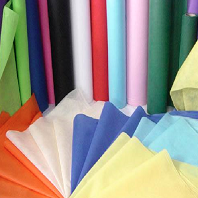The Importance of Flame Retardants in Nonwoven Fabrics
- Postdate: 2023-08-22
- From: qibochem.com
-
The Importance of Flame Retardants in Nonwoven Fabrics
- Postdate: 2023-08-22
- Form: qibochem.com
-
Introduction:
Nonwoven fabrics, characterized by their versatile applications and cost-efficient production, have gained widespread usage across various industries. In certain scenarios, however, it becomes crucial to enhance their fire resistance properties. This is where the incorporation of flame retardants into nonwoven fabrics becomes significant. This article delves into the reasons behind the necessity of adding flame retardants to nonwoven fabrics.
Ensuring Personal Safety:
Perhaps the most compelling reason for introducing flame retardants into nonwoven fabrics is the enhancement of personal safety. Fire incidents can occur unexpectedly in various settings, such as residential, commercial, and industrial spaces. By retarding the rate of combustion, flame retardants offer occupants valuable time to escape potentially hazardous situations. This added escape time can make a critical difference in safeguarding lives.
Environmental Protection:
In the event of a fire, materials that lack flame retardant properties tend to emit toxic gases, harmful smoke, and other hazardous substances into the environment. By incorporating flame retardants into nonwoven fabrics, the release of these harmful byproducts is minimized, contributing to a healthier and safer environment for both humans and ecosystems.
Preserving Property:
Applications of nonwoven fabrics span across interior decorations, upholstery, and furniture manufacturing. In such contexts, the inclusion of flame retardants becomes essential to minimize property damage in case of fire. Slowing down the spread of flames and reducing the intensity of combustion can significantly decrease the extent of property loss, thereby reducing repair and replacement costs.
Adherence to Regulations and Standards:
Numerous industries are subject to regulations and standards that require materials to meet specific fire safety criteria. Incorporating flame retardants into nonwoven fabrics ensures compliance with these regulations, preventing legal complications and ensuring responsible business practices.
Expanding Applications:
Certain industries demand materials with superior fire resistance properties. For instance, aviation, aerospace, and military sectors prioritize materials that can withstand high temperatures and potential fire hazards. By adding flame retardants, nonwoven fabrics can be tailored to meet the stringent requirements of these industries, broadening their potential applications and increasing their market value.
Promoting Social Responsibility:
Choosing to produce and use nonwoven fabrics with effective flame retardancy is not just a business decision; it's also a reflection of social responsibility. By actively contributing to fire prevention and control, manufacturers and users of flame-retardant nonwoven fabrics demonstrate their commitment to the safety and well-being of individuals and communities.
Conclusion:
Incorporating flame retardants into nonwoven fabrics is a pivotal step towards enhancing fire safety across diverse environments. The imperative lies not only in mitigating property damage but, more importantly, in safeguarding lives. With increased awareness of the benefits that flame-retardant nonwoven fabrics bring, industries can make informed decisions to prioritize safety, adhere to regulations, and contribute to a safer and more sustainable world.
Shijiazhuang Qibo Technology Co., Ltd. specializes in the production of halogen-free, low-odor, antistatic, anti-aging, antibacterial, flame retardant masterbatch for transparent non-woven fabrics.

















